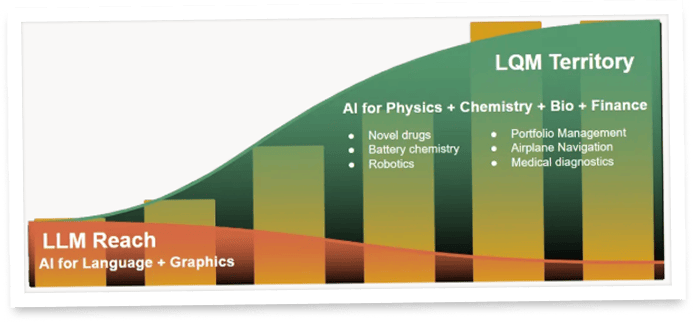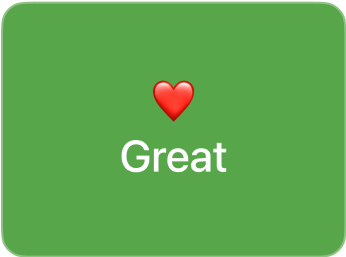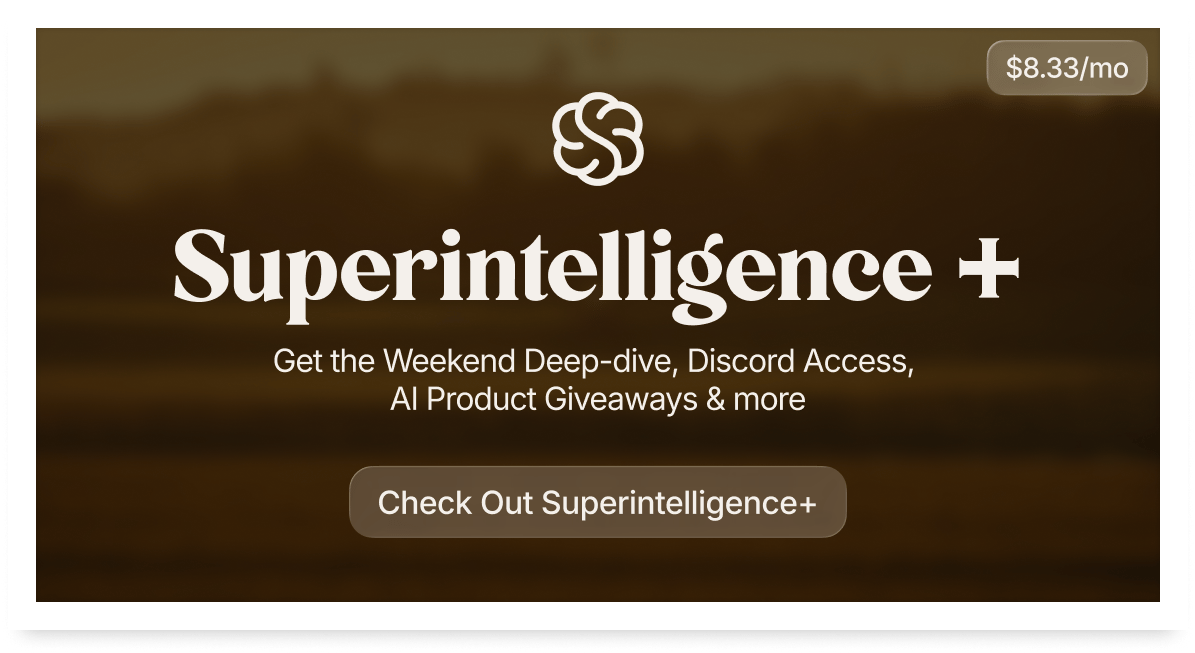In partnership with:
Dear Readers,
This Friday, we have something very special for you again: an exclusive interview with Nadia Harhen, the General Manager of AI Simulation at SandboxAQ.
SandboxAQ operates at the intersection of AI and physics to accelerate discovery in drugs, chemicals, and advanced materials. General Manager Nadia Harhen explains why Large Quantitative Models (LQMs) -AI systems grounded in physics, math, and chemistry—could compress years of R&D into months and unlock therapies and materials we simply don’t have today. We also talked about what it's like to be an extraordinary Google spinoff and to survive in this competitive market.
Have fun reading!

All the best,



Exclusive interview with SandboxAQ about LQMs!
The Takeaway
👉 LQMs are physics/chemistry-based models that predict the real world
👉 SandboxAQ uses them for new drugs, materials, and catalysts
👉 In silico design shortens development cycles from years to months
👉 Example: Aramco project for recycling “waste” materials
👉 Goal: Democratize discovery; focus also on rare diseases
Career Path & Motivation
Kim: What drew you to SandboxAQ, and how did Google and Johnson & Johnson prepare you for this role?
Nadia: My path wasn’t straightforward. I began as a bench scientist at Johnson & Johnson, working on medical devices with shorter time-to-market than drugs. Drug development was slow, cost billions, and often failed—sometimes after a decade of investment—because the original hypothesis was wrong. I moved into regulatory affairs, acting as the last leg to commercialization, explaining safety and efficacy to regulators. I focused on radiology—today the area with the most AI clearances—and helped bring cutting-edge AI imaging tools to market. As algorithms surpassed radiologists in narrow tasks, I shifted from companies like Siemens to Google, and later into SandboxAQ when we spun out.
Kim: And your day-to-day now as GM of AI Simulation?
Nadia: A mix of deep customer work—understanding their hardest scientific problems—and leading our teams to ensure they have the tools, mindset, and culture to solve problems no one has solved before. It’s translating scientific potential into commercial and human impact.

Your next hire won't be human—it will be AI.
If ChatGPT could actually do the work, not just talk about it, you'd have Lindy.
Just describe what you need in plain English. Lindy builds the agent and gets it done—no coding, no complexity.
Tell Lindy to:
Create a booking platform for your business
Handle inbound leads and follow-ups
Send weekly performance recaps to your team
From sales and support to ops, Lindy's AI employees run 24/7 so you can focus on growth, not grunt work.
Save hours. Automate tasks. Scale your business.

SandboxAQ, LQMs and LLMs
Kim: In one sentence, what does SandboxAQ do?
Nadia: Deep impact at scale.
Kim: And with a few more words?
Nadia: We deliver AI solutions aimed at society’s hardest challenges: curing disease, improving the environment, and removing forever chemicals from water. Our focus is deep impact—and scale comes from the technology itself.
Kim: Most people know language models. How are Large Quantitative Models different?
Nadia: LLMs understand and generate language, trained on text. LQMs understand and predict the physical world, trained on physics, mathematics, and chemistry. LLMs are great interfaces—write an email, help query systems—but they don’t drive biopharma, materials invention, catalysis, or robotics dynamics. LQMs do. They generalize differently and are grounded in natural laws, so they don’t hallucinate in the same way.
Kim: What does this mean for everyday life?
Nadia: Access to new drugs and materials. It still takes time for testing and regulation, but we can enable better therapies and tackle areas where progress has stalled—like neurodegeneration. We target “hard-to-drug,” “hard-to-invent” categories.
Kim: Can this help with climate—new materials or energy solutions?
Nadia: Yes. Traditional design-make-test cycles iterate on narrow parameter sets and take years. We do in-silico design, optimizing across hundreds of thousands of parameters at once, producing physically grounded generative predictions you can ship to a lab for confirmatory testing. This removes years from the cycle. In batteries, for example, we can explore substitutes for constrained minerals and assess longevity and performance computationally. Kim: A recent project you’re proud of?
Nadia: Our work with Aramco. The challenge: take a material currently considered waste and create a value stream via catalysis. Using our catalysis platform, we invent new chemistry to transform low-value outputs into higher-value products. It helps customers’ bottom lines and the environment by reducing waste in the first place, with more to be shared publicly soon.
Spin-Out DNA & Strategic Partners

Kim: You spun out of Google. What advantages did that bring?
Nadia: We started in Google’s Moonshot Factory, where you build for scale and engineer for all the ways things can fail or be misused. That scale DNA stayed with us. As a spin-out, we also gained the ability to partner broadly and independently, which is strategically powerful.
Kim: You’ve raised hundreds of millions from companies like NVIDIA and Google. Why do they back you?
Nadia: They believe LQMs are key to transforming life sciences and energy. We’re focused on overcoming decades-old scientific barriers, bringing information into innovation.
Kim: Are you alone in this approach?
Nadia: There’s plenty of AI in drug discovery—knowledge graphs, various specialized methods—but success past Phase 2 hasn’t happened yet. We’re distinctive in data-sparse regimes with high failure rates, where we’re still achieving success. Real-world validation is essential; AI alone isn’t enough.

Five-Year Outlook & Moonshots
Kim: What breakthroughs do you hope to see in five years?
Nadia: LQMs will help computers understand nature faster than ever—delivering the materials and medicines many hope quantum computers might enable someday, but earlier via large-scale simulation and compute.
Kim: If you had one moonshot?
Nadia: Rare genetic diseases. Commercial incentives are weak because populations are small. If we de-risk and accelerate computationally, the economics change—we can address many more conditions and change individual lives.
Kim: What makes you hopeful?
Nadia: Democratizing discovery—putting powerful tools in scientists’ hands so cures and materials emerge in real time, within our lifetimes.
Kim: Most rewarding moment so far?
Nadia: Standing up two business units—AQBioSim and AQChemSim—post-spin-out, and seeing customer impact within two to three years. Our customers benefit, and society benefits. That direct link is incredibly rewarding.
Kim: Nadia, this was fantastic—wishing you and the team every success.
Nadia: A pleasure to be with you, Kim. Thank you.
Sources:

Build smarter, not harder: meet Lindy
Tired of AI that just talks? Lindy actually executes.
Describe your task in plain English, and Lindy handles it—from building booking platforms to managing leads and sending team updates.
AI employees that work 24/7:
Sales automation
Customer support
Operations management
Focus on what matters. Let Lindy handle the rest.














